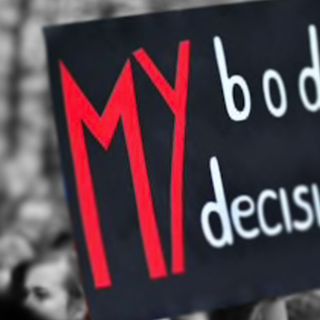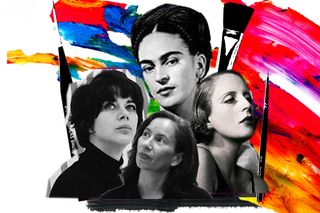
Works by Female Artists Account for Only 2% of Global Spending at Auctions
Art by Picasso was auctioned for more than the total amount spent on nearly 6,000 female artists’ work, in the last decade.

Only 2% of the global spending at art auctions — $4 billion of $196.6 billion — in the last decade was on artworks by women. For context, works by Pablo Picasso alone were auctioned for $4.8 billion during the same period. That’s one man’s work being valued at more than the total spent on the top 6,000 female artists’ work — combined.
Not only is the market for women artists smaller, but it is also disproportionately skewed in favor of only a few women. Five artists make 40% of that minuscule 2% of auction spending: Yayoi Kusama, Joan Mitchell, Louise Bourgeois, Georgia O’Keefe and Agnes Martin. In contrast, the top five male artists — Picasso, Andy Warhol, Zhang Daqian, Qi Baishi, and Claude Monet — account for only 8% of $192.6bn spent on artworks by men; their sales are distributed more evenly among more men.
These recent findings, and the glaring discrepancies within them, are a result of a research project on the presence of work by female artists in museums and the market over the past decade, by art websites Artnet News and In Other Words (owned by one of the largest art dealers in the world, Sotheby’s). It includes an analysis of market statistics, along with a survey of the acquisition and exhibition data from 26 leading U.S. art museums, such as the Museum of Modern Art and Solomon R. Guggenheim Museum in New York, and the Smithsonian American Art Museum in Washington, D.C.
“The numbers are devastating,” Marc Payot, vice president and partner at Hauser & Wirth, a leading modern art gallery, told In Other Words. “We think we are going in the right direction, but the perception has changed more than the reality. If you take away the top five female artists, in essence, nothing has changed.”
Additionally, of all the works bought over the last decade by the 26 art institutions surveyed, only 11% were by women; female artists headlined only 14% of all exhibitions held at these institutions. African-American artists were doubly marginalized, accounting for only 3.3% of the women whose work was acquired by these institutions.
These findings are in stark contrast to the prevalent rhetoric in the art world over the last decade, which is one of progressiveness and inclusivity, with the aim of increasing diversity in artworks both, coming in and going out of the doors of these very museums, galleries, and art dealerships. “There have been few advances made — even as museums signal publicly that they are embracing alternative histories and working to expand the canon … Our research shows that, at least when it comes to gender parity, this story is a myth,” co-write Charlotte Burns and Julia Halperin, executive editors of In Other Words and Artnet News, respectively, in an in-depth analysis of the numbers the project excavated.
Why the bias against female artists persists
There are a number of reasons the male gaze still won’t blink, figuratively speaking. For one thing, the canon of art history — the ‘classics,’ so to speak — remains crucial in its perception as being central to the work done by these museums and institutions. This bias is built into the very structure of the museums, Burns and Halperin explain, for their identities are shaped by the things they have historically collected — there’s a belief that they will only be considered prestigious if they buy and host only the greatest artworks in history. Therein, lies the problem. Since women have been historically excluded from art, this attitude to curation will also continue to exclude women. The curious thing these museums fail to see, however, is that the art they acquire ultimately ends up forming the canon — their halls are where history is made and recorded.
“Another limiting factor is a lack of research about female artists, whose work was often not collected by major institutions during their lifetimes, tracked by historians, or conserved by art dealers,” co-write Burns and Halperin. A recent study of Yale School of Art students found that female alumni were written about in books and scholarly publications two to three times less frequently than their male peers — even though male and female graduation rates have been nearly equal since the 1980s.
Related on The Swaddle:
How Indian Photographers Are Subverting the ‘Male Gaze’ in Their Art
This deeply-entrenched bias is in direct contradiction to the narrative of progress within the art world. Part of the reason why is because of who’s calling the shots: of the chief curators at the institutions surveyed, the majority were female — 23 women compared to 13 men. An analysis of the boards of trustees at the 26 museums surveyed also revealed that almost half of their members — 47% — are female. However, the corner offices are still reserved for men. “Sixteen of the museums in our data set have male directors, compared to ten that employ female directors. The largest institutions are almost always run by men: of the country’s top 10 institutions by budget, only one has a female director (Kaywin Feldman of the National Gallery of Art in Washington, DC),” co-write Burns and Halperin.
Having greater female representation is always a goal to strive towards — but not as tokenism. Instead of seeing the good that it does, the diversity that hiring more women brings — the museums with the highest proportion of exhibitions by women over the past decade all have female directors — the art industry still nurtures a divisive pay gap. Male chief curators make $71,050 on average, while women make $55,550, according to the 2017 National Museum Salary Survey.
What it takes to bring about change in the art world
Interestingly, the research also found that bringing change — real change, not lip service — depended on the commitment to it and not the type or size of the institution. For example, works by women represent 16% of acquisitions over the past 10 years at the Los Angeles County Museum, committed to bringing more gender parity to its permanent collection. This is 4% more than the San Francisco Museum of Modern Art, a prominent contemporary museum with a similar, if not larger, operating budget, during the same period. This goes to prove that the larger, more prestigious an art institution, the more deeply entrenched the bias and the unwillingness to let go of catering only to historically established tastes and ideas of genius. Speaking to In Other Words, artist Andrea Fraser said museums have shifted away from their original civic mission of educating the public, some of which have become more interested in “mass-marketing of the taste of the wealthiest and most influential collectors.”
The data conclusively proves that the art world is simply not as liberal and inclusive as it positions itself. There is a well-meaning conversation taking place, sure, but real change requires really wanting to do it. It means really breaking the mold, being overly aggressive to make up for the negligence of the past, bringing out the checkbooks and drawing a line that insists on the diversification of art collection in these institutions. For instance, in 2013, the Pennsylvania Academy of the Fine Arts sold Edward Hopper’s East Wind Over Weehawken (1934) — an art piece by one of the most important realist painters of the 20th century, ergo, art, as canonized as it gets — for $40.5 million. At the time the museum said nothing of what it planned to do with the money, but it meant to use the proceeds to aggressively diversify its collection. Since then, it has acquired works by women at a rate of five times the national average. So, there is a way — and many others — of bringing real gender equality in the art world. What’s lacking is commitment.
“These numbers are a little heart-wrenching,” artist Mickalene Thomas said to In Other Words. “But they are also awakening. This is not about who you are as an artist — there is a system that you aren’t a part of. It’s still a boys’ game.”
Pallavi Prasad is The Swaddle's Features Editor. When she isn't fighting for gender justice and being righteous, you can find her dabbling in street and sports photography, reading philosophy, drowning in green tea, and procrastinating on doing the dishes.
Related


The Fantasy of Elevated Daily Lives Is What Keeps Us Hooked to Influencer Routine Videos
